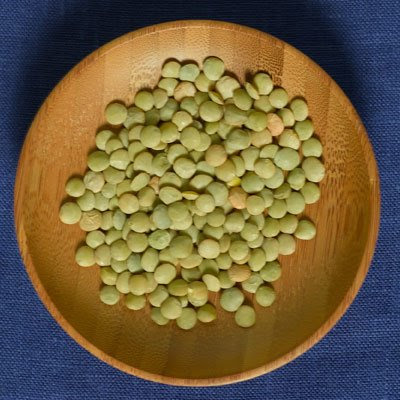Oh, how I love beans. I've never placed a bean into my mouth that I did not enjoy. [Disclaimer: This does not include retail green beans, as they cannot truly be considered beans.]
Unfortunately, I am not immune to the gastronomic side effects of beans.
It's true, there's no sense in denying it.
I want to take this opportunity to educate you on a few of the different varieties of beans (and there are many more). Some of these are completely new to me, and some are just downright beautiful. Yes, beans can be beautiful.
Here they are, in order of fiber content (per 1/2 cup) (you might learn a thing or two):
anasazi beans (12.0 g):

This attractive purple-red and white bean has a sweet, mild, full flavor and a mealy texture. Compared to other beans, it contains only 25% of the specific complex carbohydrates sometimes responsible for the gastric distress associated with dry beans. Yeah, I'll believe that when I see it.
navy beans (9.5 g):

Also known as the yankee bean, it's a smaller, denser, milder-tasting version of the great northern bean. These always bring to mind Adam Sandler's song Lunchlady Land. "Hoagies & grinders, hoagies & grinders. Navy beans, navy beans. Meatloaf sandwich. Sloppy joe, slop, sloppy joe..."
kidney beans (8.2 g):

Beware--red kidney beans contain a toxin called phytohaemagglutinin that causes severe gastric distress, including nausea, vomiting, and diarrhea. Under-cooked beans can be more toxic than raw and it only takes 4 to 6 beans to bring on symptoms. Duly noted.

lentils (7.8 g):

Lentils are one of the oldest known cultivated crops. I like 'em because they're meaty, quick-cooking, and make a mean veggie burger.

pinto beans (7.7 g):

Medium in size, they lose their mottling when cooked, turning a uniform pinkish-brown with a delicious creamy texture that makes them ideal for refrying. Mmm...refried beans.
black beans (7.5 g )(a personal fave):

My source states that the low-fat high-fiber profile of black beans makes them relatively friendly to the digestive system. I'm here to tell you that that's a bald-faced lie.

lima beans (6.6 g):

Lima beans are large, creamy white, and disk-shaped with a buttery flavor and starchy texture. I like 'em big, thick, and juicy; those little ones are useless to me.
chickpeas (6.2 g):

Chickpeas have a mild yet hearty flavor and keep their unique round shape when cooked. In addition to being a good source of protein and calcium, they are especially high in iron. Hummus rules.

great northern beans (6.2 g):

The largest of the commonly available white beans, great northerns have a mild, delicate flavor that makes them perfect for baked bean recipes. I should probably eat more of these since I am now a resident of the great north...
soybeans (5.2 g):

Soybeans are higher in protein than any other legume and the only vegetable protein that is complete. The complex proteins in soybeans are hard to digest, which is why many of the traditional products derived from soybeans are fermented, a process that breaks down these proteins for easier digestion. I've had edamame, which are immature soybeans, and they're good. Real good.
adzuki beans (5.0 g):

A small, dark red bean that holds its color well when cooked, the adzuki is sweet and easier to digest than most other beans. I've never heard of it before, but I'd eat it.
appaloosa beans:

A hybrid bean from the American Southwest, its brownish-black and white markings resemble those of an Appaloosa pony. Their flavor is similar to the black bean, only more intense and earthy. That's a good-looking bean, and I need to try it immediately.
trout beans:

This heirloom bean is attributed to a man named Jacob Trout who ostensibly bred this bean in colonial Virginia (hooray!). An attractive bean with maroon markings on white, it's renowned for its baking qualities and rich, meaty texture. It's purdy.
lupini beans:

Technically a member of the pea family, these flat, coin-shaped, dull yellow seeds are second only to soybeans in plant protein content. They look fun, kinda like oyster crackers.
mung beans:

They can range in color from greenish-brown to yellow to black and have a delicate sweet flavor. They need no pre-soaking, cook quickly, and are easier to digest than most other beans because they contain very low levels of oligosaccharides, the substance in beans that causes flatulence. Again, I require proof. And I have to say, what an unenticing name for a food.

fava beans:

Favas are large oval beans, light brown in color, with a creamy texture and a strong earthy flavor. They can be eaten fresh as well as dried, with or without liver and a nice chianti.

calypso beans:

Similar in flavor but milder than the black bean, calypso beans are a hybrid with dramatic black and white coloring that resembles a yin yang symbol, complete with black dot. How cool is that? I need to hunt some of these down.
flageolet beans:

These small, pale green beans are actually immature kidney beans. And it's pronounced flah-JOH-lay.
 So, beans I need to find and sample: anasazi, adzuki, appaloosa, trout, lupini, mung, fava, calypso, flageolet. Until I have done this, I can hardly call myself a bean connoisseur.
So, beans I need to find and sample: anasazi, adzuki, appaloosa, trout, lupini, mung, fava, calypso, flageolet. Until I have done this, I can hardly call myself a bean connoisseur.Lesson complete. Consider yourself educated.

No comments:
Post a Comment
Tell me things!